Greg O’s Garage: Robert Moses and the battle to acquire land for Cunningham Park
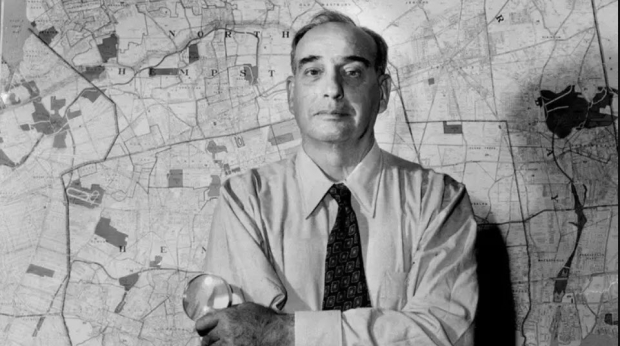
In 1940, Robert Moses wanted to expand Cunningham Park. A look at some Moses documents from the Kroplick collection.
Moses set out to right what he considered a wrong from 1934.
Here is a rare, original 1940 Robert Moses letter to the Board of Estimates on the acquisition of a small slice of land just below the Motor Parkway in Hollis, Queens.
Greg O.
Robert Moses the Man
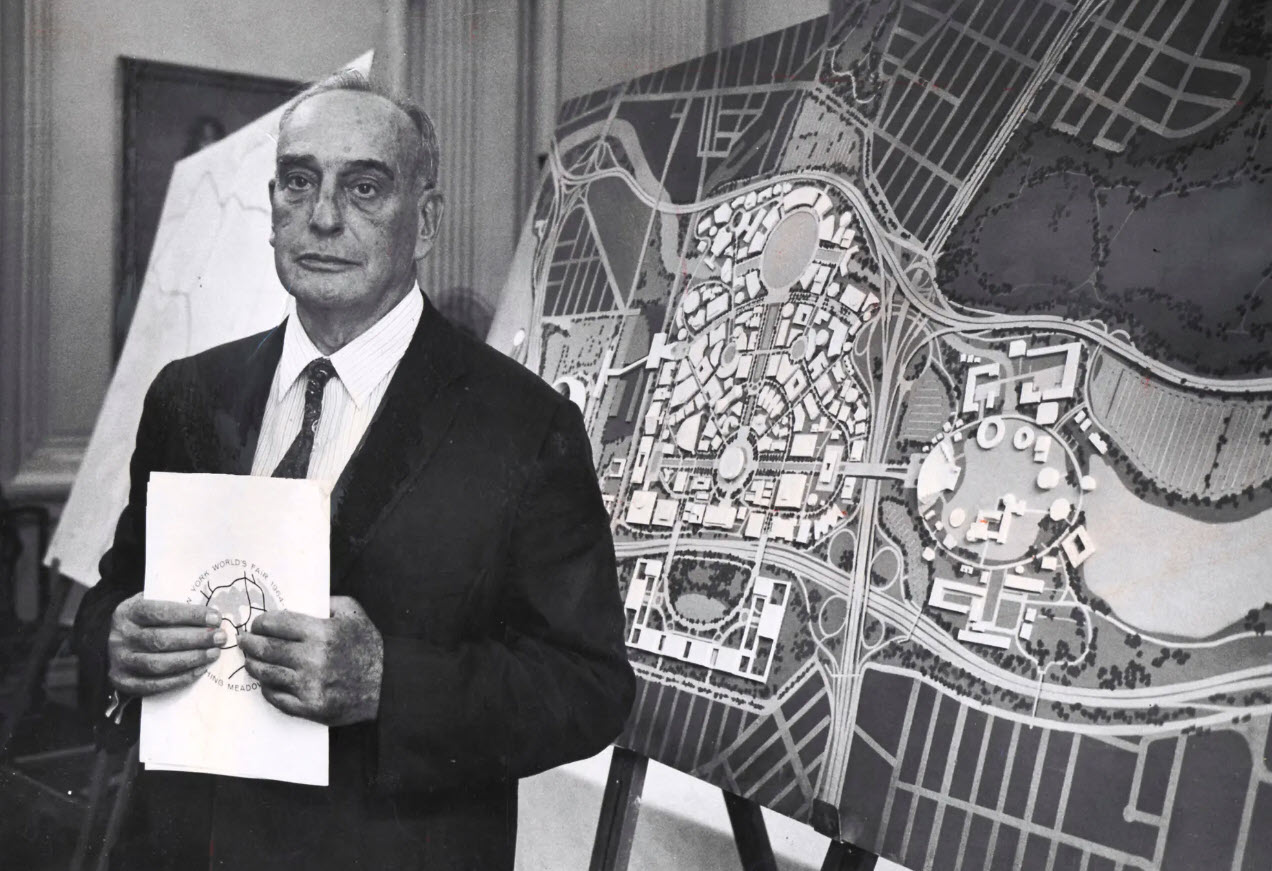
The two most prominent figures responsible for the shaping of New York as we know it today are Fiorello La Guardia, and his ever-controversial, road, park and bridge building contemporary, Robert Moses. Love or loathe Moses, there is no denial that his 'get-things-done' personality forever altered urban city planning throughout not just New York, but the entire United States. We had never seen anything like the driven Yale/Oxford educated man before, and because of him, we will never see another.
His unprecedented list of powerful titles is exceptional for a man who was never voted into any office.
-Long Island State Park Commission (President, 1924–1963)
-New York State Council of Parks (Chairman, 1924–1963)
-New York Secretary of State (1927–1928)
-Bethpage State Park Authority (President, 1933–1963)
-Emergency Public Works Commission (Chairman, 1933–1934)
-Jones Beach Parkway Authority (President, 1933–1963)
-New York City Department of Parks (Commissioner, 1934–1960)
-Triborough Bridge and Tunnel Authority (Chairman, 1934–1968)
-New York City Planning Commission (Commissioner, 1942–1960)
-New York State Power Authority (Chairman, 1954–1962)
-New York's World Fair (President, 1960–1966)
-Office of the Governor of New York (Special Advisor on Housing, 1974–1975)
Despite his accomplished career and controversial life, a movie biography has surprisingly never been made, but a new off-Broadway play called 'Straight Line Crazy' by British playwright David Hare, starring Academy Award nominee Ralph Fiennes as Moses, will have its exclusive 9-week engagement this month at The Shed in Hudson Yards in Manhattan.
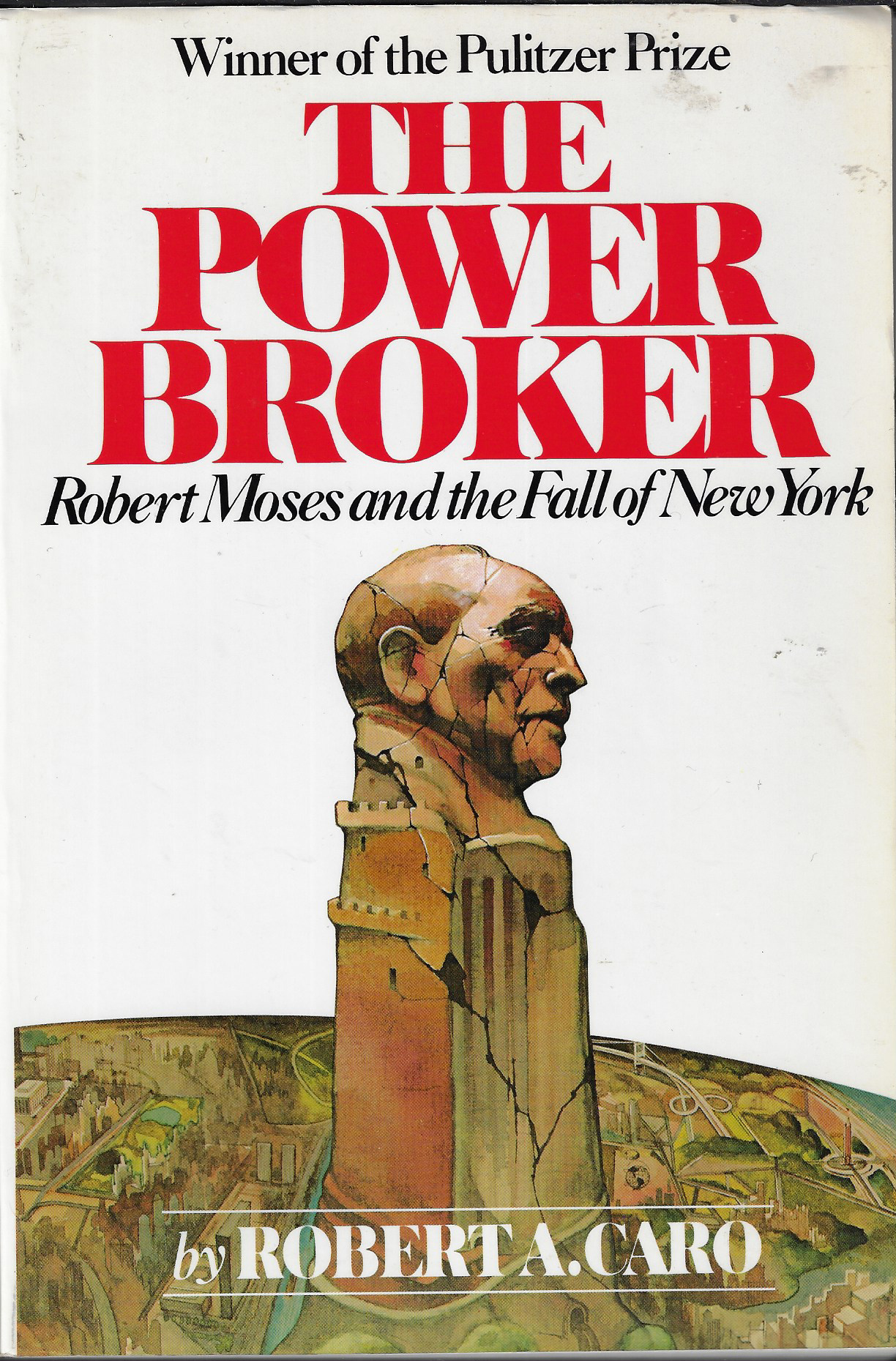
Forever tarnishing Moses' reputation, former Roslyn Country Estates resident Robert Caro in his 1974 Pulitzer-winning biography, 'The Power Broker', painted Moses not only as a brilliant planner, but also as a possibly racist individual with little regard to actual citizens, instead, idolizing the automobile and construction above everything else. His disregard for the minority poor, may be evident in his statistics. For instance, of the 658 playgrounds he built in his 50-year career, only two were built in Harlem, and those, certainly did not have the amenities of playgrounds in other parts of the city.
Cunningham Park Land Aquisition
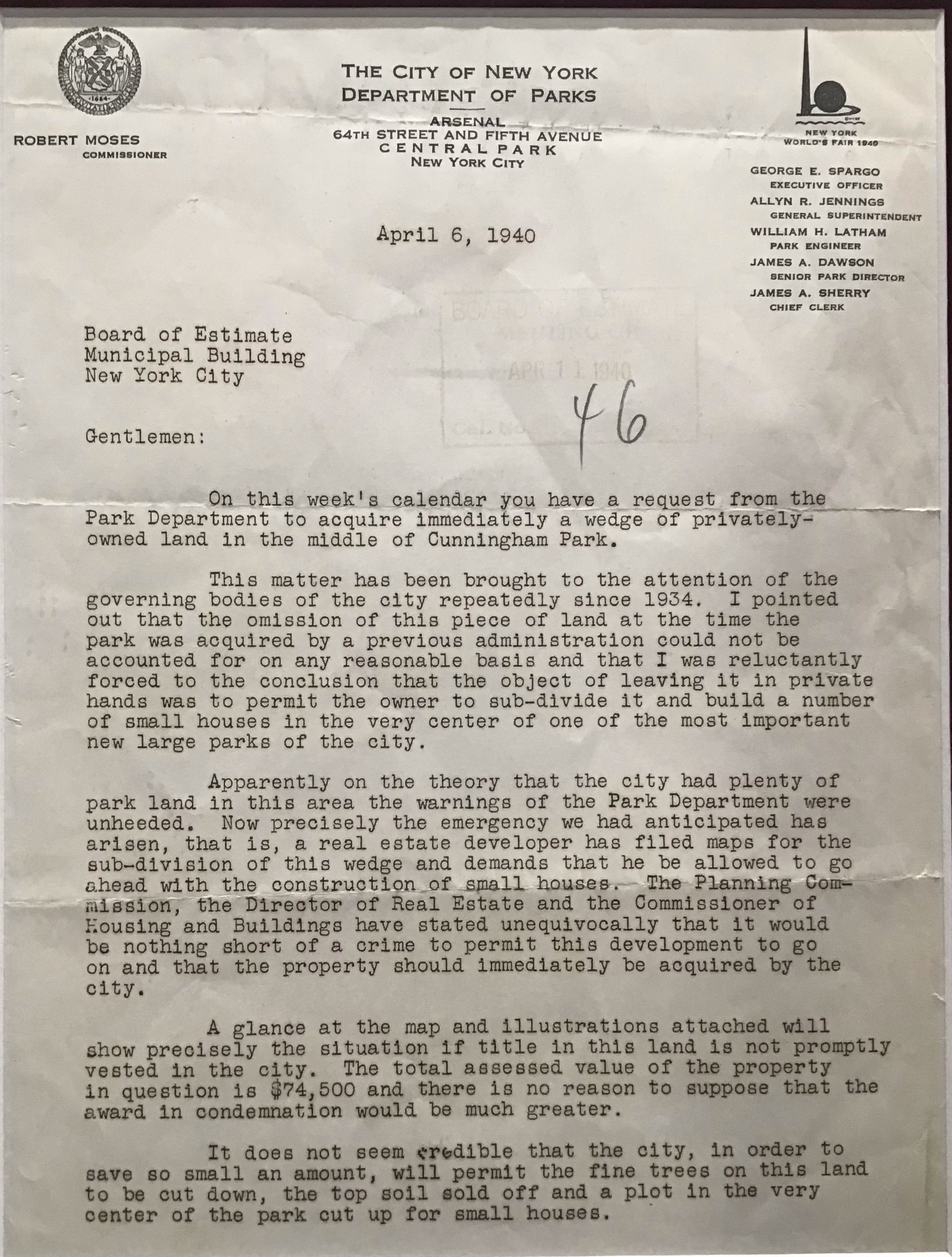
New York City acquired land to build a park, named Hillside Park, in 1928. In 1935, Hillside Park was renamed to honor WW1 veteran, Major W. Arthur Cunningham. A resident of Forest Hills, Major Cunningham successfully ran as a Republican for the position of controller of New York City in 1933.
In Moses' own words in this amazing, preserved letter, as early as 1934, Moses recognized that not acquiring this wedge of land was a problem for many reasons, calling it "nothing short of a crime", especially for such a paltry 1940 appraised value of $74,500.
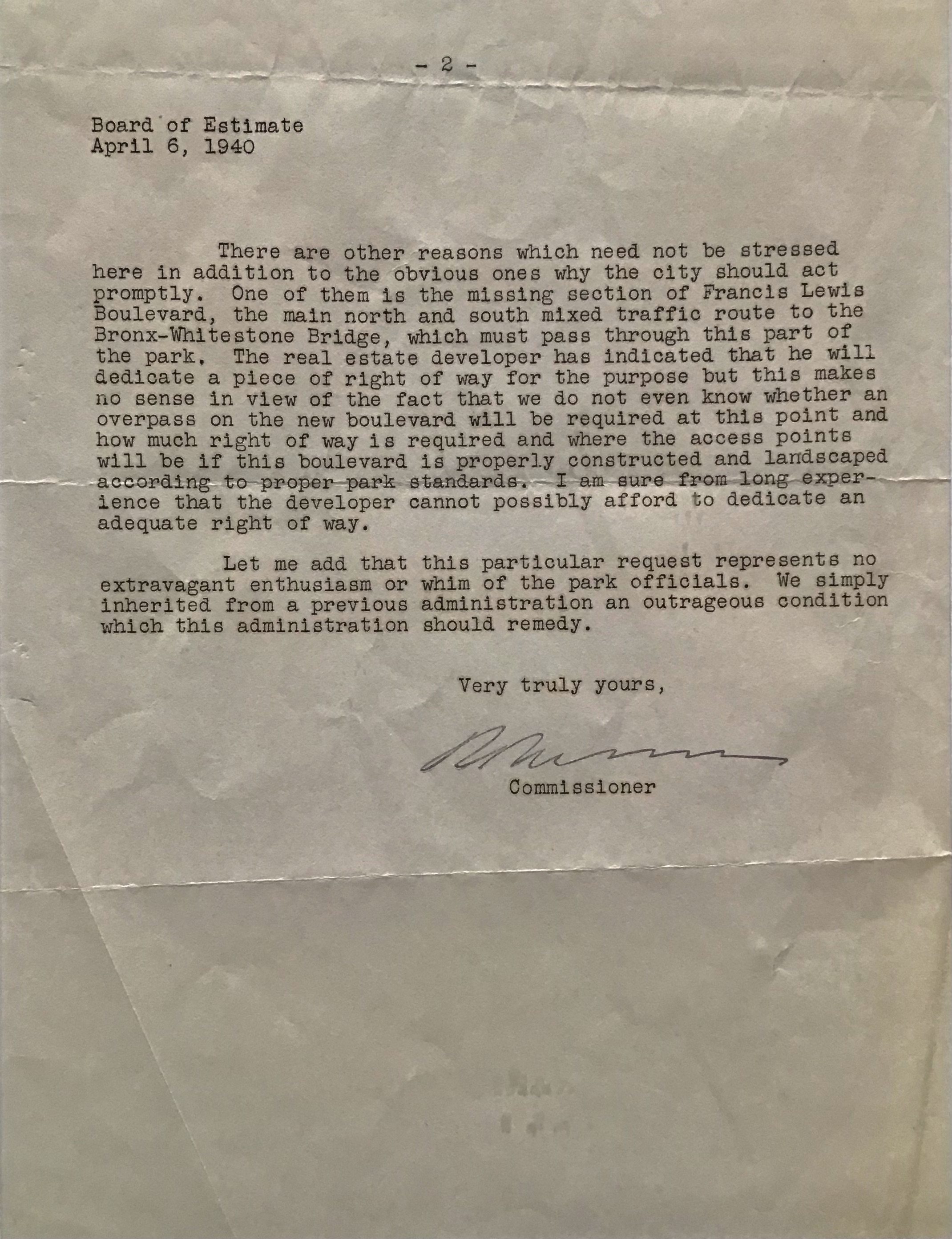
Cutting down the trees and placing this development of small homes in the center of the park was something he feared and refused to let happen, but most likely for Moses, the more important reason was his desire to connect a disjointed Francis Lewis Blvd through this wedge of land. Francis Lewis Blvd at the time was the main North-South route to and from the Whitestone Bridge.
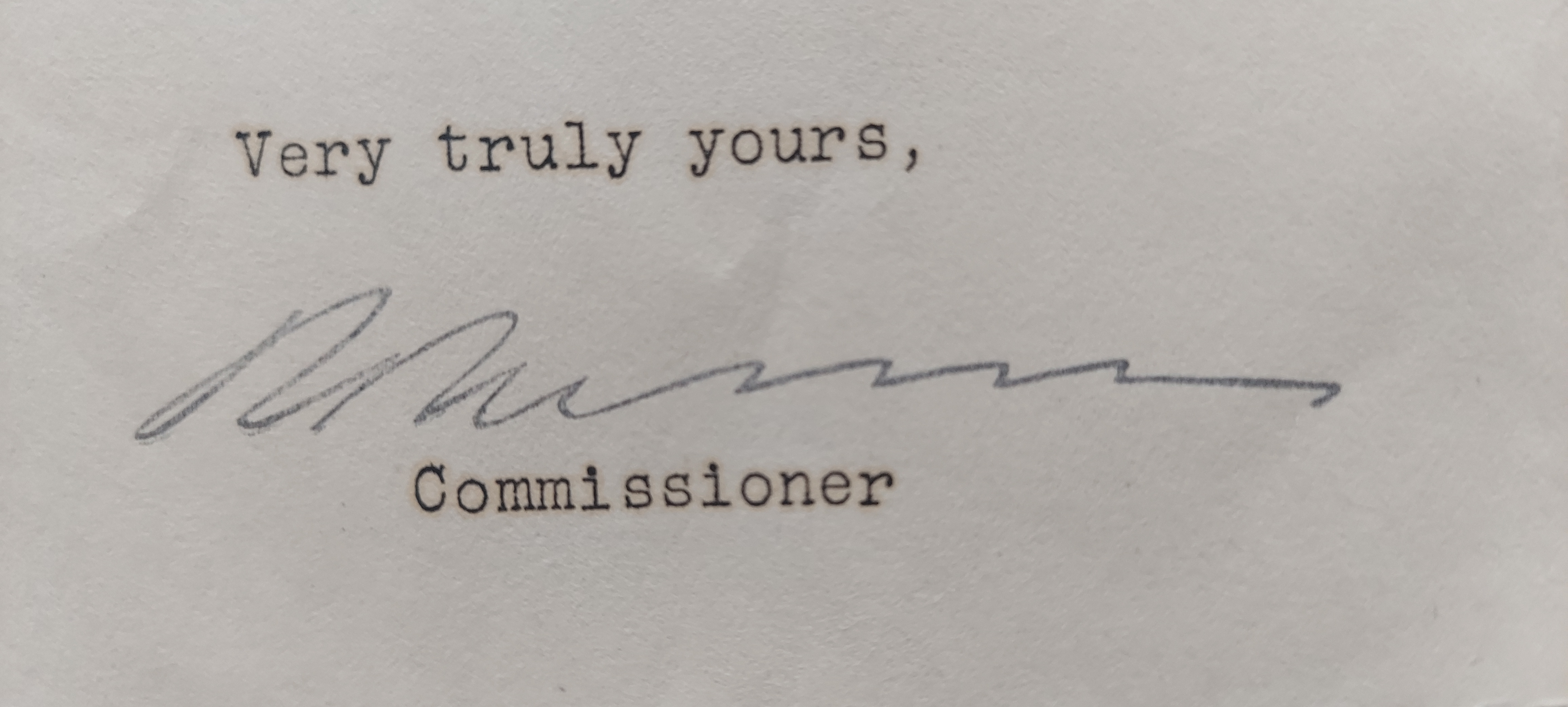
Robert Moses' original signature on the document.
The Developer's Plans
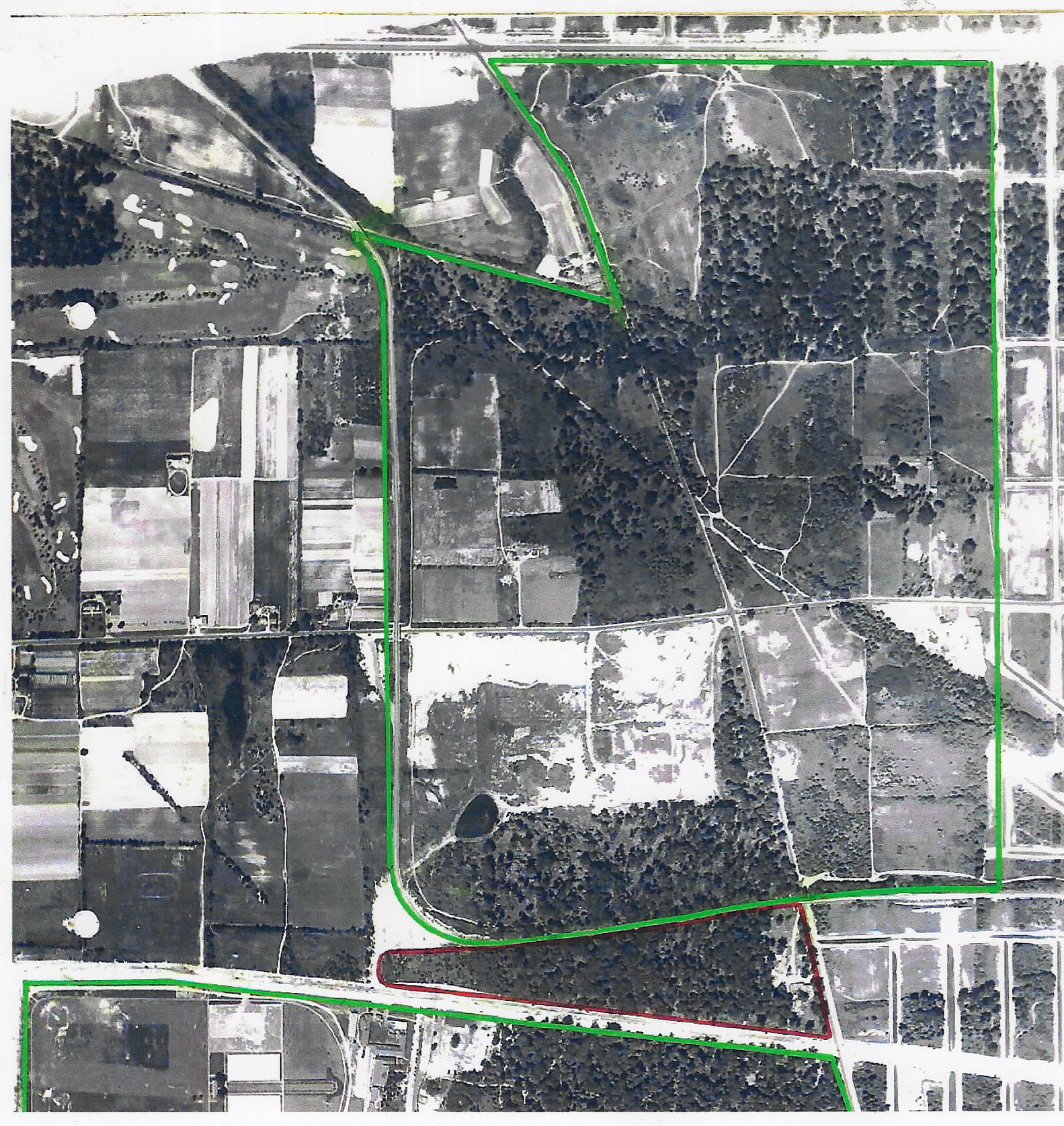
The triangular slice of land needed to connect disjointed parts of Cunningham Park, as well as connecting parts of Francis Lewis Blvd not even yet seen under construction within the frame of this aerial.
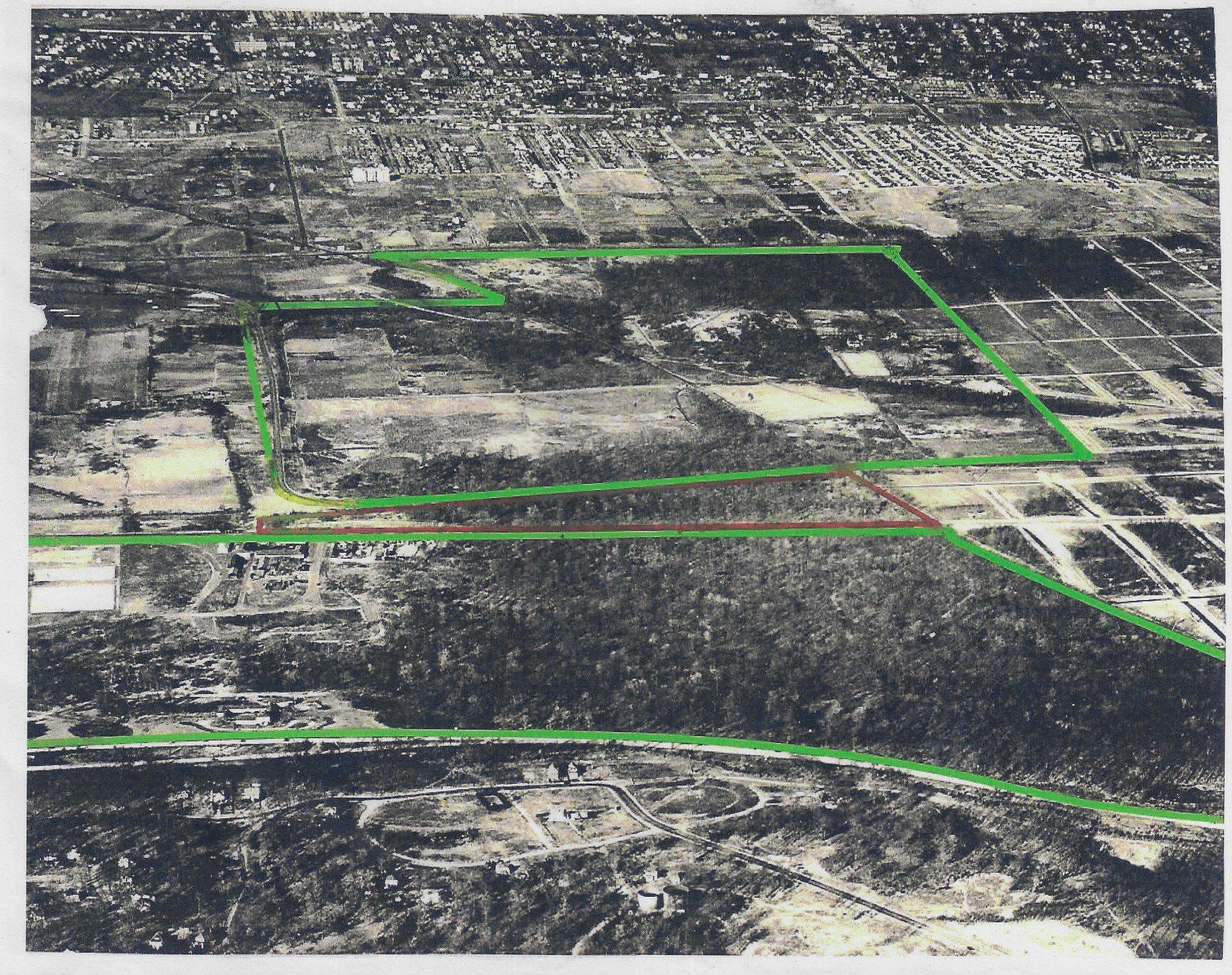
Another view from the developers
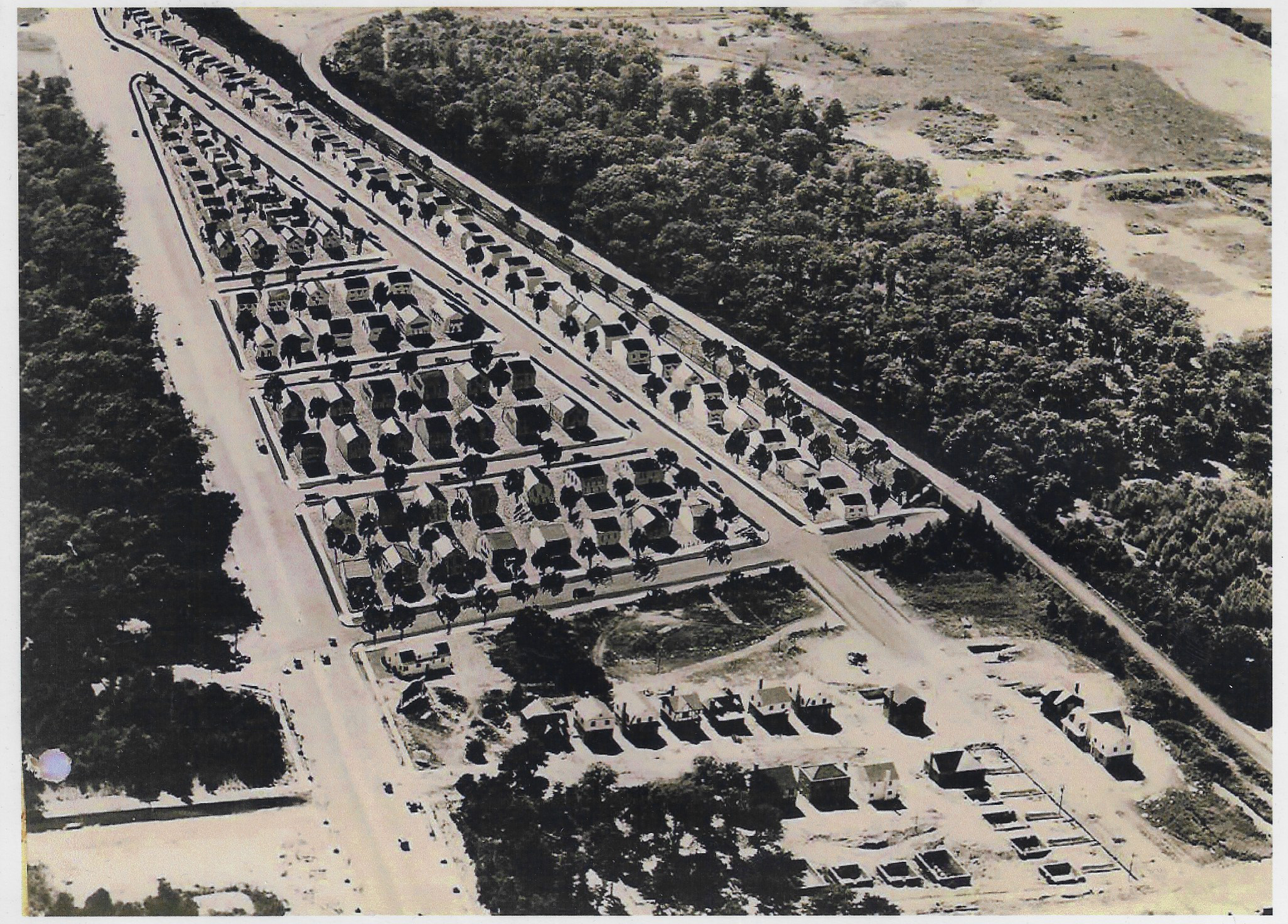
An enhanced photo from the developer looking west with an illustration drawn on the photo to visualize what the future subdivided neighborhood would look like. Note the added road paralleling the Motor Parkway just to the south.
Cunningham Park Today
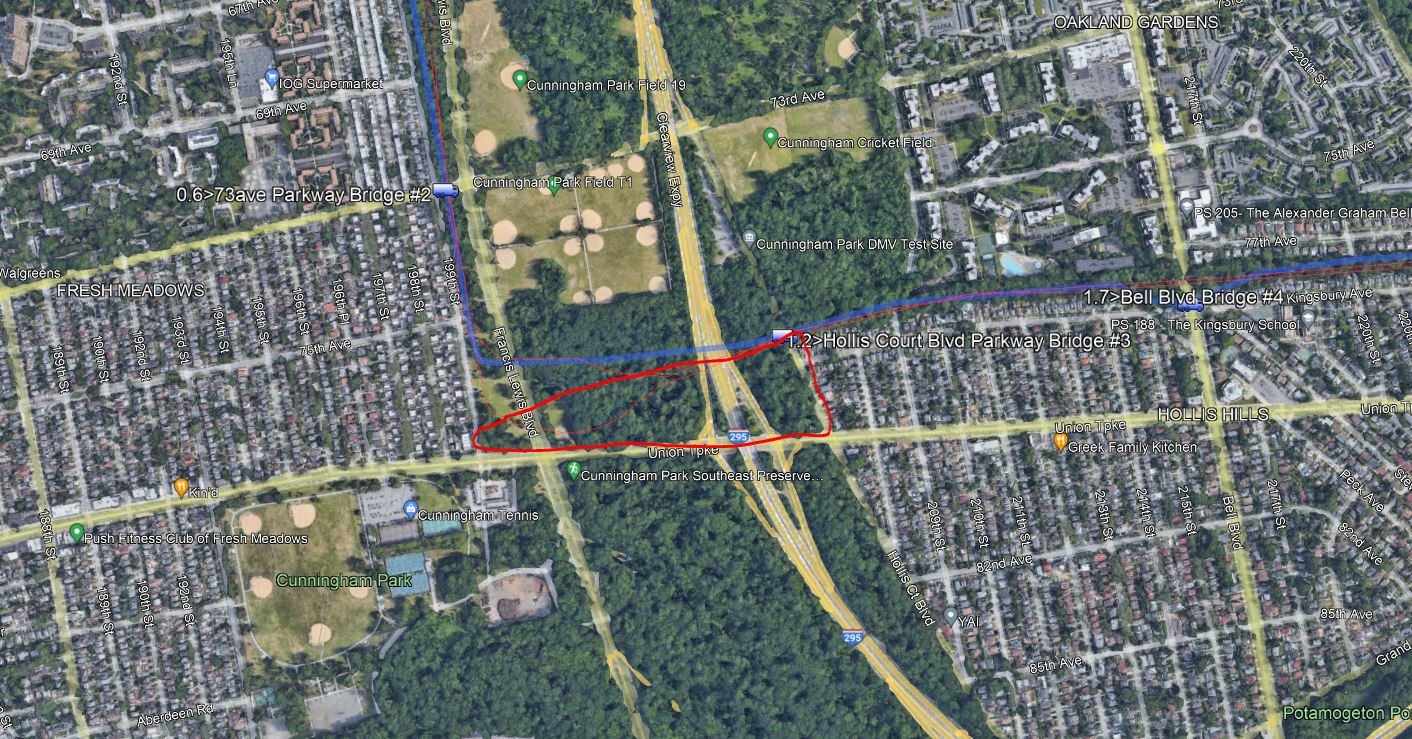
A current Google Earth view with the property in question in the red triangle with Francis Lewis Blvd cutting right through the western edge of the 1940 property.
The Clearview Expressway, (I-295) had eventually also utilized a portion of Cunningham Park during its construction starting in 1957, with its completion in 1963. Moses' answer to traffic congestion was always to build more roads, but usually, rather than resolving a traffic issue, it usually just meant another congested highway. It's entirely possible, (But just conjecture on my part) the eventual Clearview might have been in the back of his mind since connecting Francis Lewis Blvd. earlier.
Either way, both roads were made possible due to the city's acquisition of the land by this important letter in 1940.
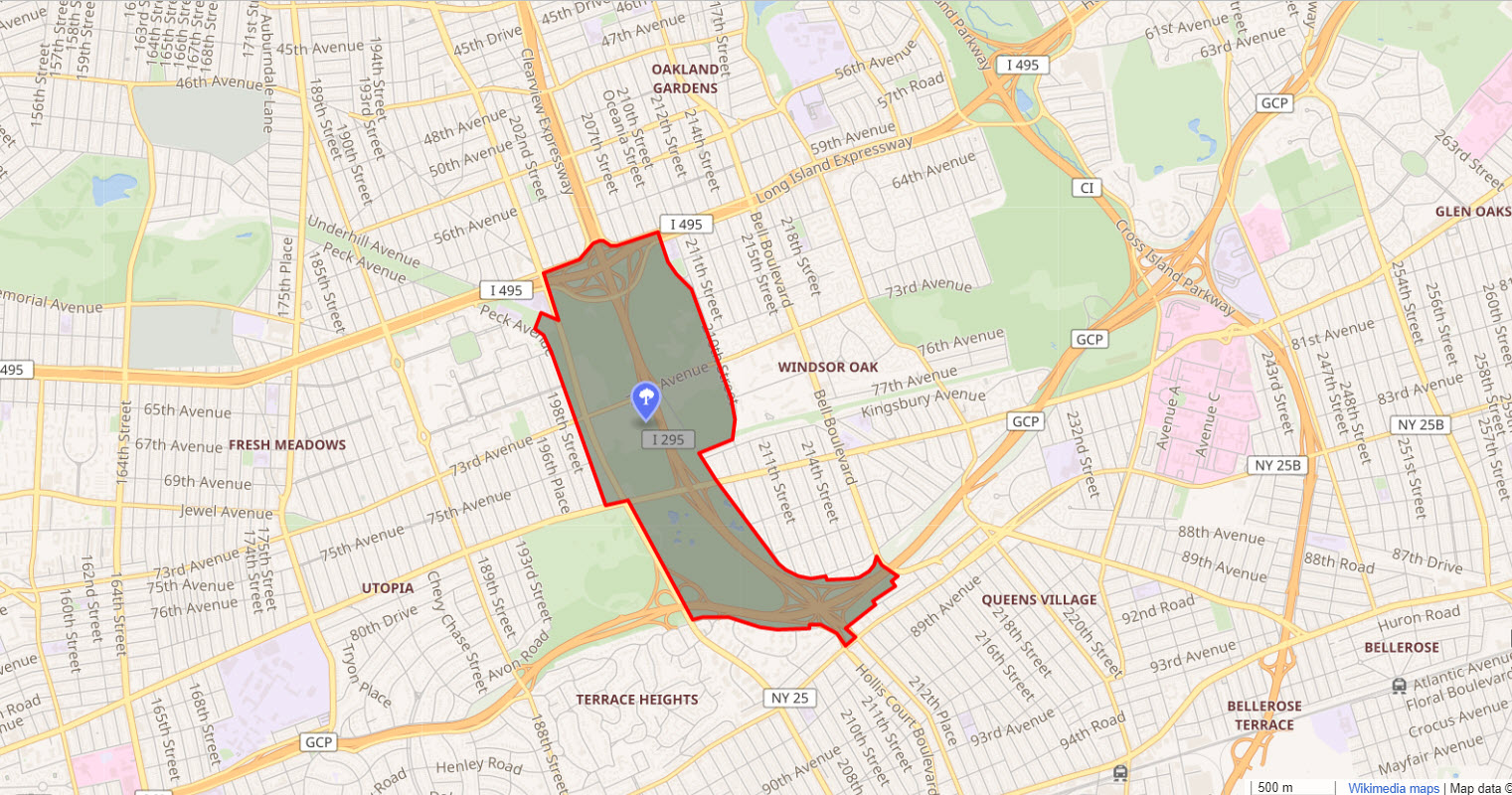
The full, current boundaries of the park today
Follow-Up to last Sunday's post
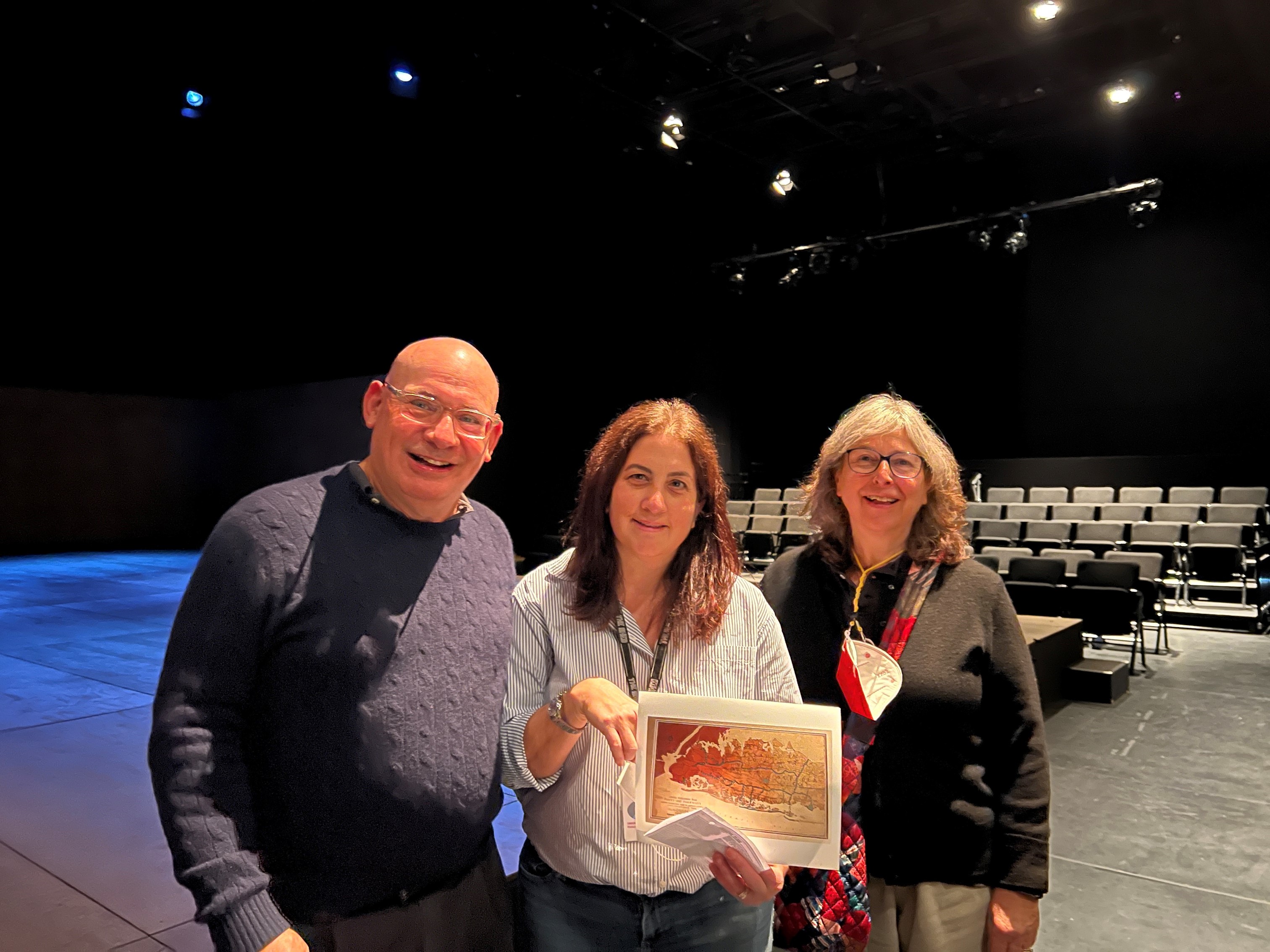
Howard, Roz and Laura Aswad, productor of The Shed and Straight Line Crazy (Saturday, October 22, 2022)
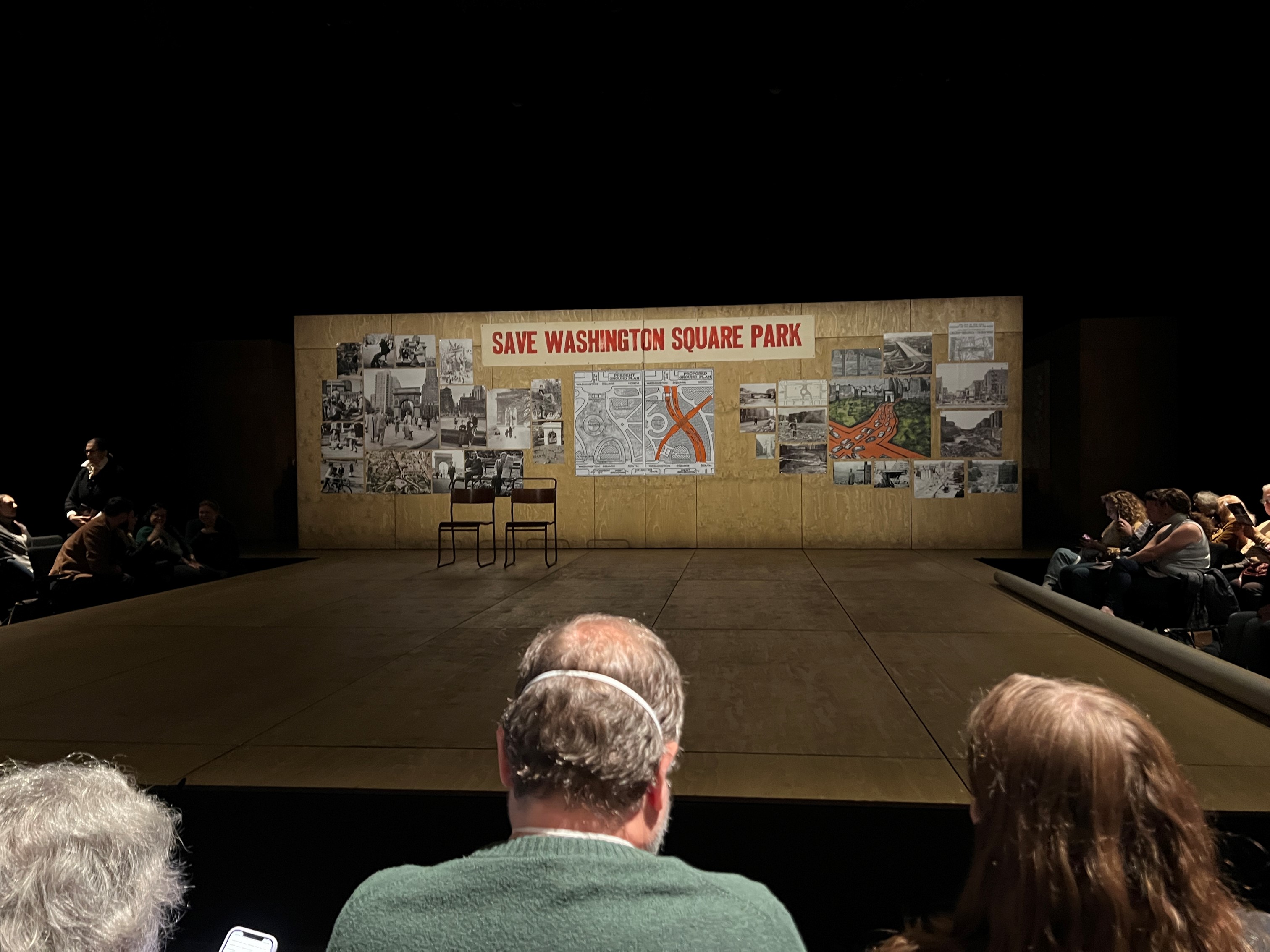

Comments
Interesting to see the photo with a small lake that appears to have been filled in
As a Floral Park “Queens Kid” you are on my turf here! My Mom’s side of my family all owned houses stretching from Hollis and Hollis Woods right on east to where I grew up in Floral Park on the Queens?Nassau border. All through the late 50s and into the early 60s me and my friends would bike ride to Alley Pond Park and cruise the old and abandoned Motor Parkway from the east end crest overlooking Creedmore all the way west and then north to Horace Harding near Fresh Meadows (where St Francis Prep was eventually built.)
That triangle you note was the last wooded area of Cunningham before the parkway turned north to its starting point at Horace Harding. And it is in that exact sliver of forest where we would always encounter a relatively large group of hobos set up in makeshift tents and lean-tos usually sitting around a campfire. That group of quiet but friendly men disappeared as work began on the Clearview Expressway, disrupting our bike adventures and the solace of the woods in this sliver of Cunningham.
The larger expanse of Cunningham which ran along Union was basically cut off from the beautiful homes in Hollis Woods by the Grand Central Parkway. Hollis Woods swept down the “hillside” to Hillside Ave which remains as the northern boundary to Hollis.
The pond you note had long disappeared by the time of my childhood but that section of baseball field always flooded in the rain. Cunningham had no real ponds and lakes compared to the numerous watering holes in Alley Pond Park. Interestingly, most of those Alley ponds are now gone or swampy lowlands.
Anyone looking to a massive foil to the plans of Moses need only take the Clearview to its southern end at the congested juncture of Hillside Ave where its momentum is stopped by Queens Village. It is right there that Robert Moses’ power was broken, so to speak.
On the plus side, I’m ever grateful he carved out the forested respite of Cunningham which exists and thrives to this day.
In 1953, when I was five years old, my parents bought what was a newly constructed “up and down” house on 199th St between 51st and 53rd Avenues. The area can be seen in the views looking north from what was then Horace Harding Blvd and its intersection with what was then the end of Francis Lewis Blvd. 53rd Ave and 201st St is visible as well. It shows my Public School, PS 162, which stands out because it was, and still is, three stories high. When I was older in the late 50s, I’d take my bike on what we called the “Vanderbilt Parkway” from its beginning at Peck Ave all the way to Creedmor. Another sidelight is that I first learned of Robert Moses in 1953, just after we moved into our new home. The original right of way for what was to be the Clearview Expressway was Francis Lewis Blvd. My parents and all of the families along 199th St. picketed against the proposed route because 199th St. was to become a “service road”; we’d have to move just when we moved in. For whatever reason, having nothing to do with our picketing, the right of way was changed to 204th St., which was one of those odd and very wide “street” thoroughfares. I remember well the specialized vehicles that lifted and then moved houses that were along 204th St. to new locations. As for the Clearview Expressway, it initially ended at the LIE in 1960 and eventually ended at Hillside Ave. in 1964 when construction was completed. Of note is that the expressway was intended to go all the way to Idlewild as a through route for commercial traffic as part of the northern bypass route of the City. It never made it because of political considerations. So, to this day, trucks must use the LIE to the Van Wyck to get to JFK.
Two notes: I have a 1950 letter from the owners of Alley Pond Stable, addressed to my uncle who boarded his horse there for $1.58 per day, that the stable property had been “condemned” and he would have to board his horse elsewhere. The address of Alley Pond Stables was East Hampton Blvd and 56th Rd, which is today a short
Dead End street that abuts that section of Alley Pond Park. My uncle would move his horse to Lakeville Stables on the north side of Horace Harding in Lake Success. I should say my uncle was the son of a cop and had grown up on 221st St near Crocheron Park in the 1930s and 40s, caddying at the local courses, working numerous jobs, such as soda jerking on Bell Blvd and eventually became a horse show jumper, and later judge and steward of shows, rising to the management of the National Horse Show, all of which during a span as NYC public school Industrial Arts teacher.
The other note is that my wife’s grandfather owned what was once three garden apartment buildings on the north side of Horace Harding Blvd between 201st and what was 204th Street—now two buildings, the the one having been in the middle of the proposed service road of the new Clearview Expressway. That building was sold and razed and two odd-sized house lots replaced it when the Clearview was built.